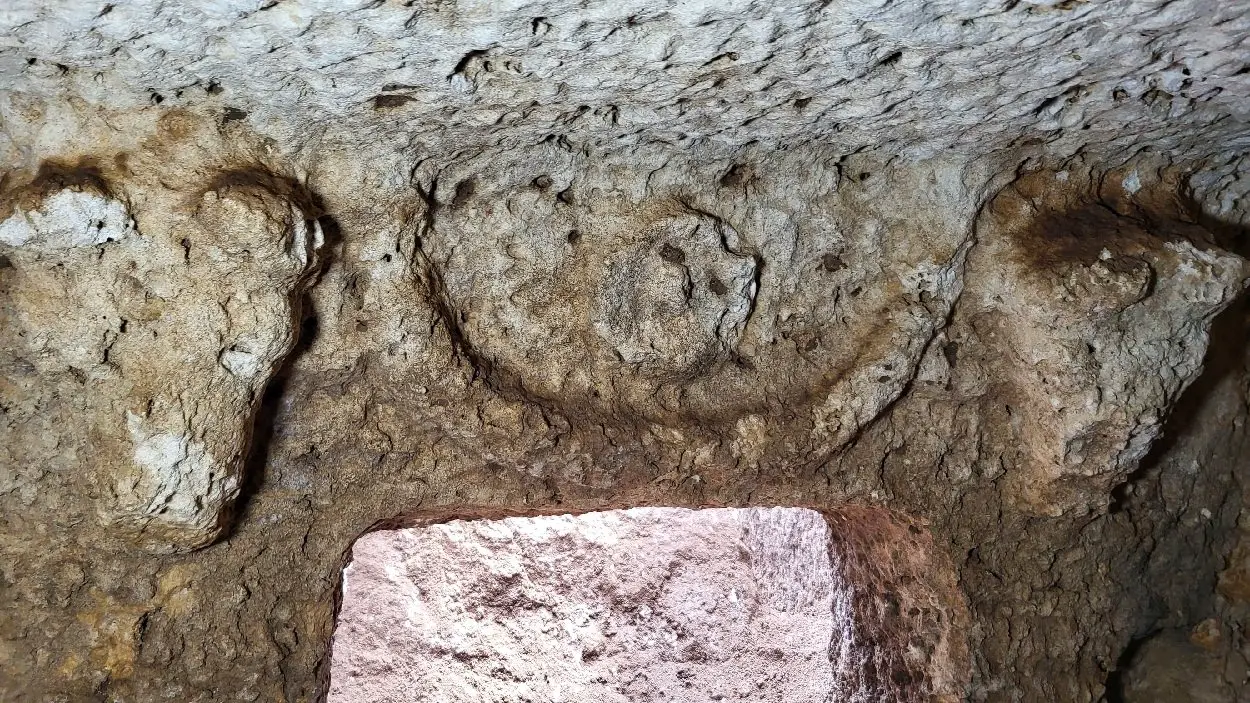Archaeologists excavating at the ancient Tharsa necropolis have uncovered a Roman Era tomb guarded by two carved bull heads.
Tharsa is located near Kuyulu village in southeastern Turkey along the Adıyaman-Şanlıurfa Highway.
The site was situated on a major Roman highway from Doliche to Samosata, which today consists of a two settlement mounds and a large necropolis that dates from the 3rd century to the Byzantine period.
Excavations first commenced in 2021 which discovered a collection of Turuş Rock Tombs, a type of tomb construction carved directly into the bedrock.
In the latest season, archaeologists have excavated another Turuş Rock Tomb, however, this example was found to have two carved bull heads which is decorated with garlands and rosettes between the horns.
Bull heads, known as Bucranium, were a form of carved decoration commonly used in Classical architecture. In Ancient Rome, bucrania were often used on the friezes of temples in the Doric order of architecture, later influencing the architecture of buildings from the Renaissance, Baroque, and Neoclassical periods.
Architectural examples of bucrania are representations of the practice of displaying garlanded, sacrificial oxen, whose heads were displayed on the temple walls.
Like similar Turuş Rock Tombs, the bull heads are carved directly into the bedrock, guarding a dozen rock cut steps descending into the burial chamber which has three arched niches known as acrosolia.
Mustafa Çelik, Deputy Director of Adıyaman Museum, said, “Tharsa Ancient City consists of 3 main archaeological areas: Big Mound, Small Mound and Necropolis Area. We started excavations in the necropolis area in 2024. We added 2 more rock tombs to the rock tombs we had previously uncovered. One of them is the rock tomb we identified today.”
Header Image Credit : Adıyaman Museum
Sources : Adıyaman Museum





